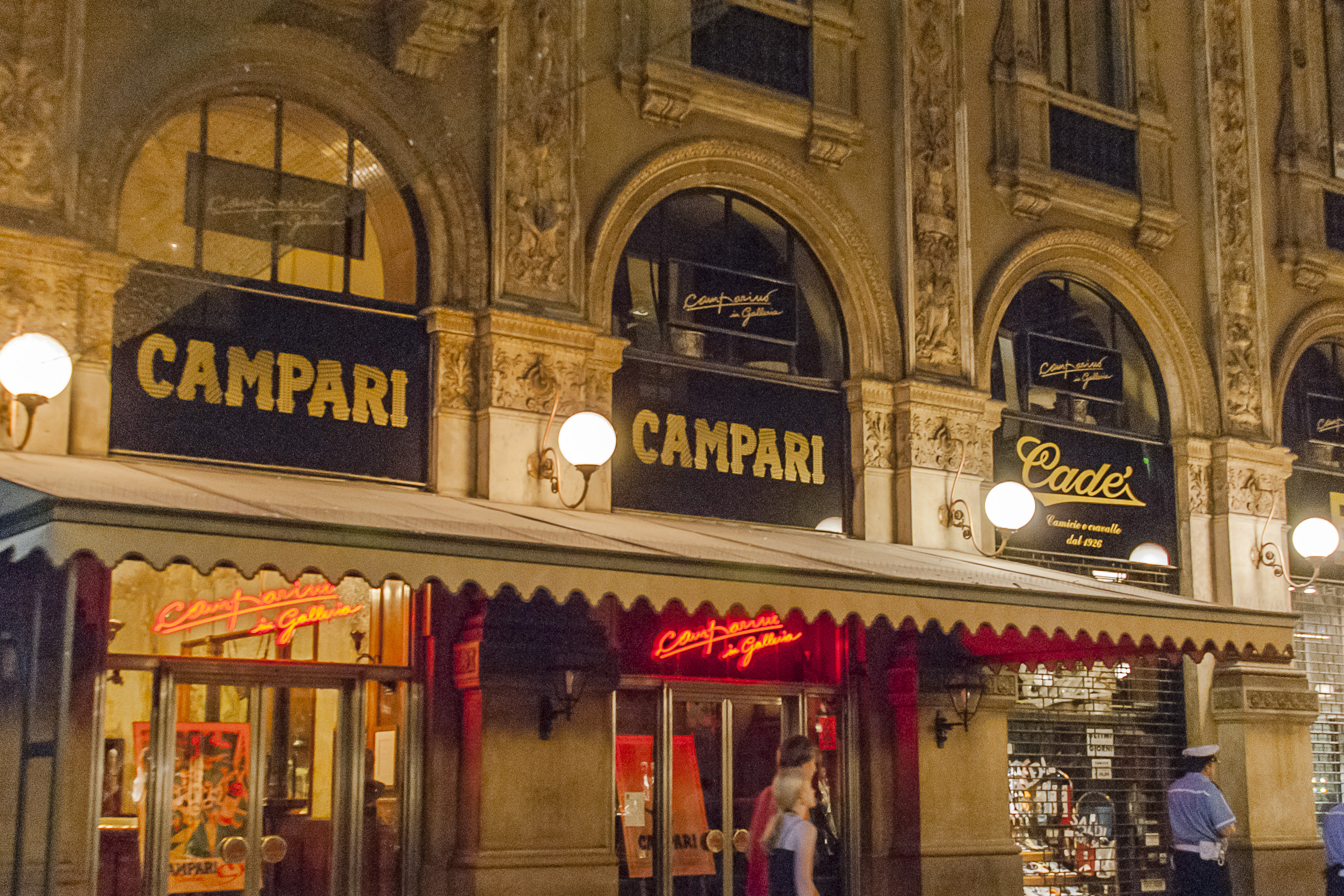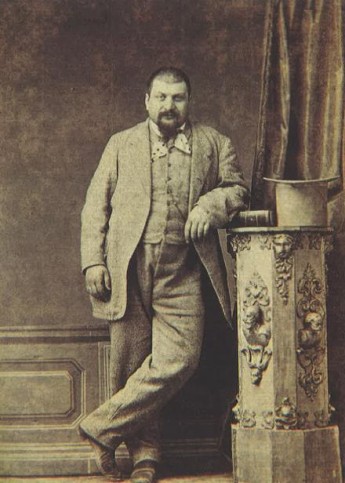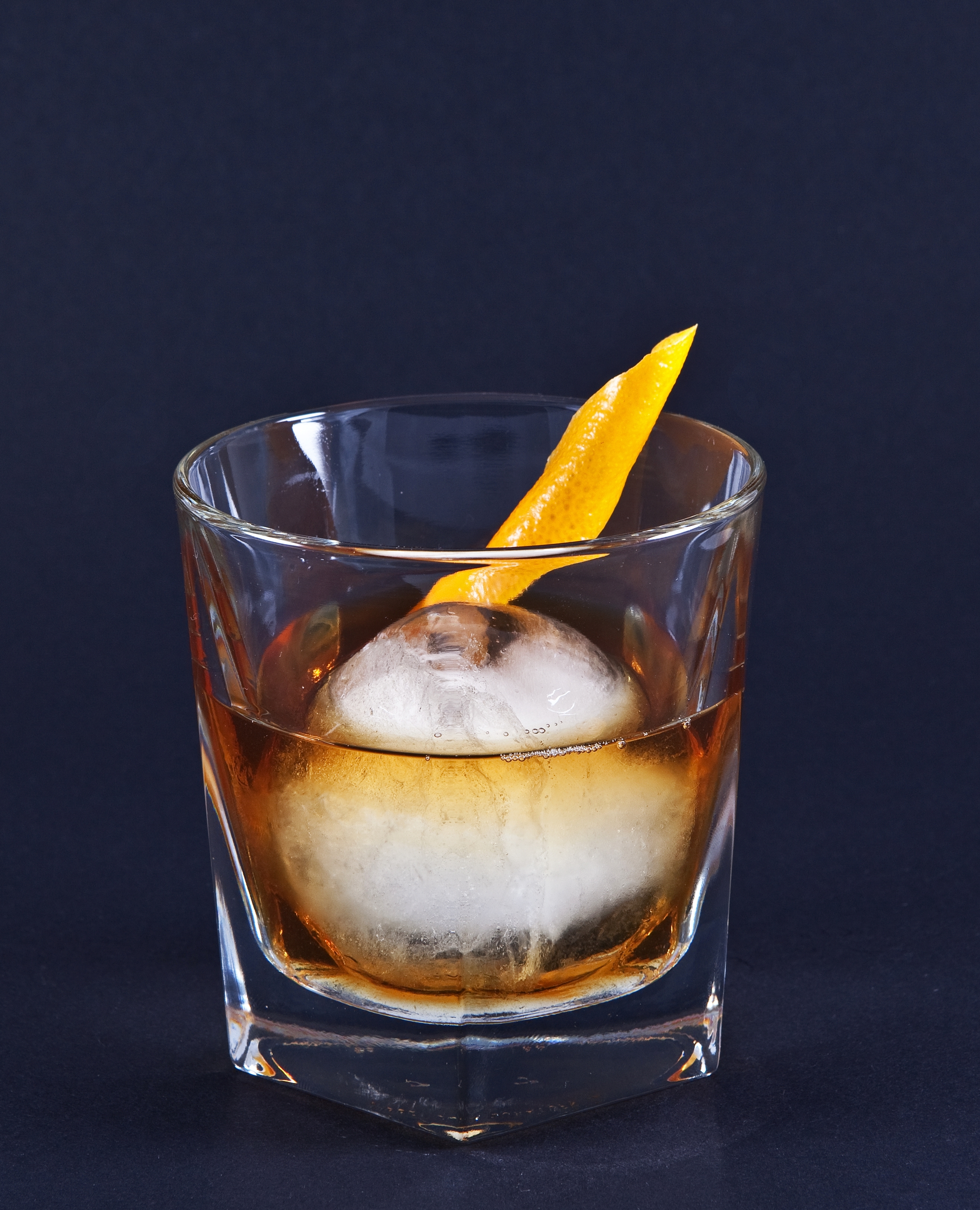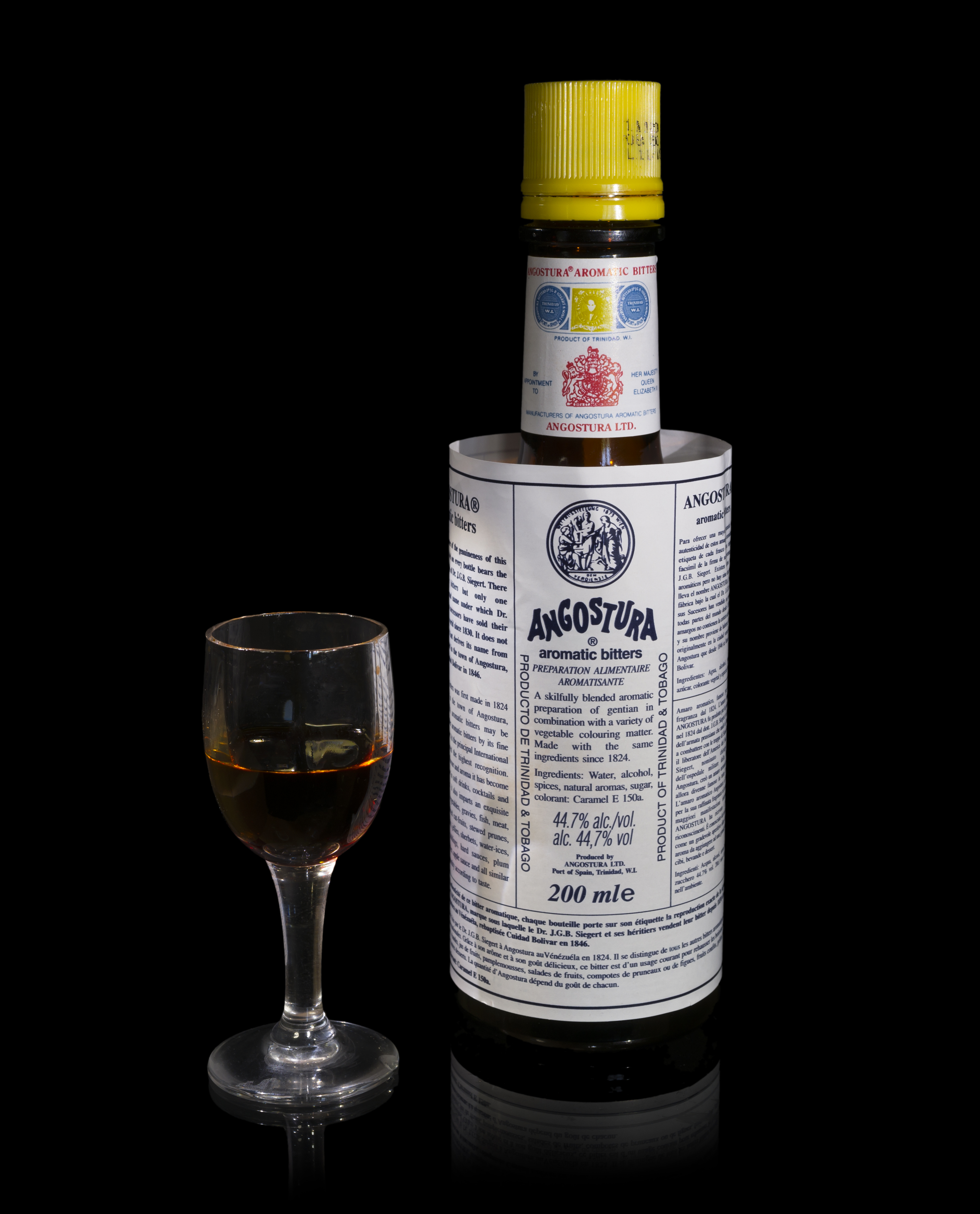|
Campari
Campari () is an Italian alcoholic liqueur, considered an aperitif, apéritif of the ''bitter'' variety (and not an amaro) by Italians while considered an apéritif of the Amaro (liqueur), amaro variety by Americans, obtained from the infusion of herbs and fruit (including chinotto and cascarilla) in alcohol and water. It is a type of bitters, characterised by its dark red colour. It is produced by the Davide Campari Group, a multinational company based in Italy. History Campari was invented in 1860 by Gaspare Campari in Novara, Italy. It was originally coloured with carmine dye, derived from crushed cochineal, cochineal insects, which gave the drink its distinctive red colour. Campari Group discontinued the use of carmine in 2006. In 1904, Campari's first production plant was opened in Sesto San Giovanni, near Milan, Italy. Under the direction of Davide Campari, Gaspare's son, the company began to export the beverage, first to Nice in the heart of the French Riviera, then overse ... [...More Info...] [...Related Items...] OR: [Wikipedia] [Google] [Baidu] |
Campari Group
Davide Campari-Milano N.V., trading as Campari Group, is an Italian company active since 1860 in the branded drink industry, beverage industry. It produces Distilled beverage, spirits, wines, and non-alcoholic apéritifs. From its signature product, Campari, its portfolio has been extended to include over 50 brands, including Aperol, Appleton, Cinzano, SKYY vodka, Espolon, Espolón, Wild Turkey (bourbon), Wild Turkey, Grand Marnier, and Forty Creek whisky. Group profile Founded in Milan by Gaspare Campari and currently headquartered in Sesto San Giovanni, the Group is now a global company (sixth-largest spirits group worldwide), marketing and distributing its products in over 190 countries. Production is concentrated in 22 manufacturing plants. Campari Group employs approximately 4,000 people and has its own distribution network. The company operates in Austria, Belgium, Germany, Italy, Luxembourg, Russia, Switzerland, the UK and Ukraine in Europe; Argentina, Brazil, Jamaica, ... [...More Info...] [...Related Items...] OR: [Wikipedia] [Google] [Baidu] |
Negroni
The negroni is a cocktail, made of equal parts gin, vermouth rosso (red, semi-sweet), and Campari, generally served on the rocks, and commonly garnished with an orange slice or orange peel. It is considered an apéritif. The drink has been documented in Italy since the late 1940s, and became popular in the 1950s, but the origin is uncertain, and early recipes differ somewhat from the modern standard. The basic recipe – an equal-parts cocktail of these three ingredients – is first recorded in French cocktail books of the late 1920s, alongside many similar drinks; in Italy a long drink of equal parts vermouth and Campari (but no gin), topped with soda and served over ice, has existed since the 1800s under the names Milano–Torino or Americano. There are claims of Italian drinks by the name "Negroni" containing gin from 1919, though these differ significantly from the modern drink; see for details. Technique The IBA recipe for the negroni specifies that it be built over i ... [...More Info...] [...Related Items...] OR: [Wikipedia] [Google] [Baidu] |
Gaspare Campari
Gaspare Campari (12 March 1828 – 14 April 1882) was an Italian drinks manufacturer. Born in Cassolnovo, Italy, the tenth child of a farmer he was making drinks at the Bass Bar in Castelnouvo by age 14. During the 1840s Campari sold a bitters-style aperitif throughout Italy, initially under the name Bitter all'Uso d'Holanda. In 1860 he formulated the product today known as Campari. His recipe, which Campari keeps confidential, contained more than 60 natural ingredients including herbs, spices, barks and fruit peels. In 1862 he remarried and settled in Milan, the home of his second wife. He ran a cafe in front of Milan's historic cathedral, the Milan Cathedra ... [...More Info...] [...Related Items...] OR: [Wikipedia] [Google] [Baidu] |
Americano (cocktail)
The Americano is an IBA official cocktail composed of Campari, sweet vermouth, and for the sparkling version, club soda and garnished with a slice of lemon or an orange twist. History The cocktail was first served in creator Gaspare Campari's bar, Caffè Campari in Milan. In the 1860s, an American man, who was under the impression that Campari was a long drink, ordered it, hated it, and said it would be better served iced and fizzy. He ordered a Campari and soda which became too bitter; after a few iterations he and the esteemed bartender decided on Vermouth as the perfect blend. It is the direct descendant of the "Milano-Torino" which consisted of Campari, the bitter liqueur from Milan (Milano) and Punt e Mes, the vermouth from Turin (Torino) but lacked soda water. This drink was itself a descendant of the "Torino-Milano", a concoction consisting of equal parts Campari and Amaro Cora. In popular culture It is the first drink ordered by James Bond in the first novel in ... [...More Info...] [...Related Items...] OR: [Wikipedia] [Google] [Baidu] |
Spritz (cocktail)
A spritz is an Italian wine-based cocktail, commonly served as an apéritif across Italy. It consists of Prosecco, a mixer (usually soda water), and a flavouring ingredient, which can be a Bitters, bitter liqueur, a bitter apéritif, an Amaro (liqueur), amaro or a syrup. The original spritz veneziano () uses the bitter apéritif Select (apéritif), Select as its flavouring ingredient and was created in Venice in 1920. Popular variants are Aperol spritz and Campari spritz, which use respectively Aperol and Campari as flavouring ingredients. Since 2011, spritz is an International Bartenders Association, IBA official cocktail, initially listed as "spritz veneziano" then simply as "spritz". The spritz became widely popular outside of Italy in the 2010s and Aperol spritz was ranked as the world's ninth bestselling cocktail in 2019 by the website Drinks International. National Spritz Day is celebrated annually on the 1st August. History Spritz was created during the period of the ... [...More Info...] [...Related Items...] OR: [Wikipedia] [Google] [Baidu] |
List Of IBA Official Cocktails
The IBA official cocktails are cocktails recognised by the International Bartenders Association (IBA) to be the most requested recipes. The list was developed starting in 1960, and the first version was announced in 1961, comprising 50 cocktails. It has since undergone periodic revisions, and as of comprises 102 cocktails in 3 categories; see for more. List of cocktails , there are 102 IBA official cocktails, divided into three equal categories of 34: The Unforgettables, Contemporary Classics, and New Era Drinks. The Unforgettables ; Alexander (cocktail), Alexander : Made with cognac, cocoa liqueur (crème de cacao), and cream. ; Americano (cocktail), Americano : Made with Campari, sweet vermouth, and for the sparkling version, club soda and garnished with a slice of lemon. ; Angel face (cocktail), Angel face : Made with gin, apricot brandy and calvados in equal amounts. ; Aviation (cocktail), Aviation : Made with gin, maraschino liqueur, crème de violette, and lemon juice. ... [...More Info...] [...Related Items...] OR: [Wikipedia] [Google] [Baidu] |
Soda Water
Carbonated water is water containing dissolved carbon dioxide gas, either artificially injected under pressure, or occurring due to natural geological processes. Carbonation causes small bubbles to form, giving the water an effervescent quality. Common forms include sparkling natural mineral water, club soda, and commercially produced sparkling water. Club soda, sparkling mineral water, and some other sparkling waters contain added or dissolved minerals such as potassium bicarbonate, sodium bicarbonate, sodium citrate, or potassium sulfate. These occur naturally in some mineral waters but are also commonly added artificially to manufactured waters to mimic a natural flavor profile and offset the acidity of introducing carbon dioxide gas giving one a fizzy sensation. Various carbonated waters are sold in bottles and cans, with some also produced on demand by commercial carbonation systems in bars and restaurants, or made at home using a carbon dioxide cartridge. It is thou ... [...More Info...] [...Related Items...] OR: [Wikipedia] [Google] [Baidu] |
Milan
Milan ( , , ; ) is a city in northern Italy, regional capital of Lombardy, the largest city in Italy by urban area and the List of cities in Italy, second-most-populous city proper in Italy after Rome. The city proper has a population of nearly 1.4 million, while its Metropolitan City of Milan, metropolitan city has 3.2 million residents. Within Europe, Milan is the fourth-most-populous List of urban areas in the European Union, urban area of the EU with 6.17 million inhabitants. According to national sources, the population within the wider Milan metropolitan area (also known as Greater Milan) is estimated between 7.5 million and 8.2 million, making it by far the List of metropolitan areas of Italy, largest metropolitan area in Italy and List of metropolitan areas in Europe, one of the largest in the EU.* * * * Milan is the economic capital of Italy, one of the economic capitals of Europe and a global centre for business, fashion and finance. Milan is reco ... [...More Info...] [...Related Items...] OR: [Wikipedia] [Google] [Baidu] |
Sesto San Giovanni
Sesto San Giovanni (; , ), locally referred to as just Sesto (), is a ''comune'' (municipality) in the Metropolitan City of Milan, in the Italian region of Lombardy. It was awarded with the honorary title of ''città'' (city) by decree of 10 April 1954, signed by President Luigi Einaudi. History An unimportant agglomerate of buildings until the 19th century, Sesto San Giovanni grew during the end of the 19th century and in the early 20th century, becoming the site of several industries, including companies such as Falck, Campari, Magneti Marelli and Breda. In that period the population increased rapidly, from 5,000 inhabitants in 1880 to 14,000 in 1911. After World War II, Sesto became populated by many migrants from other parts of Italy, leading to an increased population of 95,000 inhabitants in 1981. Sesto used to be referred to as the "Stalingrad of Italy", due to the strong historical presence of the Italian Communist Party and to its resistance to fascism in World War Two ... [...More Info...] [...Related Items...] OR: [Wikipedia] [Google] [Baidu] |
Cascarilla
''Croton eluteria'', known as cascarilla, is a plant species of the genus '' Croton'' that is native to the Caribbean. It has been naturalized in other tropical regions of the Americas. It grows to be a small tree or tall shrub, rarely reaching in height. Its leaves are scanty, alternate, ovate-lanceolate, averaging long, with close scaling below, giving a metallic silver-bronze appearance, and scattered white scales above. The flowers are small, with white petals, and very fragrant, appearing in March and April. The scented bark is fissured, pale yellowish brown, and may be covered in lichen. Chemical constituents Cascarilla bark contains anything between 1% and 3% volatile oils, a unique series of diterpenoid compounds called , lignins, tannin, and resins. There is also a long list of flavory terpene and diterpene compounds, including pinene, vanillin, D-limonene, and thujene. Uses ''Croton eluteria'' is used to aid digestion. Cascarilla bark is also used to flavor the ... [...More Info...] [...Related Items...] OR: [Wikipedia] [Google] [Baidu] |
Bitters
A bitters (plural also ''bitters'') is traditionally an Alcoholic drink, alcoholic preparation flavored with botanical matter for a Bitterness (taste), bitter or bittersweet Flavoring, flavor. Originally, numerous longstanding brands of bitters were developed as patent medicines, but lately are sold as digestifs, sometimes with herbalism, herbal properties, and as cocktail flavorings. Since cocktails often contain sour and sweet flavors, bitters are used to engage another primary taste and thereby balance out the drink and make it more complex, giving it a more complete flavor profile. Ingredients The botanical ingredients used historically in preparing bitters have consisted of aromatic herbs, bark, roots, and/or fruit for their flavor and medicinal properties. Some of the more common ingredients are cascarilla, Cinnamomum aromaticum, cassia (Chinese cinnamon), gentian, Zest (ingredient), orange peel, and cinchona bark. Most bitters contain both water and ethanol, alcohol, th ... [...More Info...] [...Related Items...] OR: [Wikipedia] [Google] [Baidu] |







